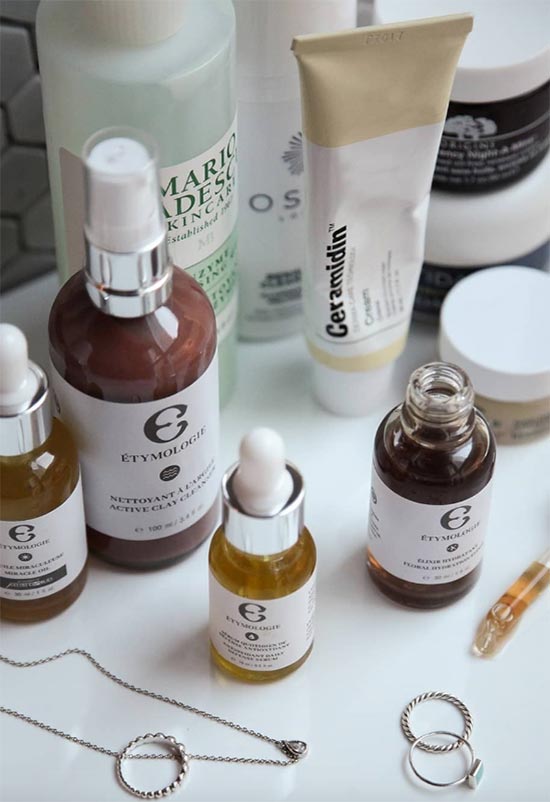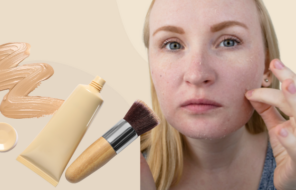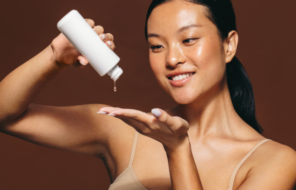Whether your concern is skin sensitivity or acne, willow bark extract is a fabulous skincare ingredient you might be interested in learning more about. This natural extract has a long history in the health and beauty world since willow bark is the original source of salicin, from which both salicylic acid and aspirin are derived. At this point the story of ancient philosophers and physicians (including Hippocrates after whom the Hippocratic oath is named) suggesting willow bark extract to alleviate pain and fever is extremely well known.
In skin care, willow bark extract acts as an anti-inflammatory that helps alleviate the redness, pain, and swelling that are associated with both acne and allergies and sensitivities. In this article, we explain what willow bark extract is, and how it works in skin care.
There is some confusion about the differences between willow bark extract and salicylic acid, so I make sure to explain them very clearly. To help you choose the right willow bark extract skincare products, I break down its benefits and explain how to choose what for every skin type and concern.
In this article:
- What Is Willow Bark Extract?
- How Does Willow Bark Extract Work in Skin Care?
- Willow Bark Extract Benefits for the Skin
- Salicylic Acid vs. Willow Bark Extract
- Possible Side Effects of Willow Bark Extract Skin Products
- How to Choose Willow Bark Extract Skin Products?
- How to Use Willow Bark Extract in Skin Care
What Is Willow Bark Extract?
Willow bark extract is an important skincare ingredient produced from the bark of the white willow tree. It shows up in skincare ingredient lists as salix alba extract, as that is the latin name of the tree. The white willow tree is native to Europe as well as Western and Central Asia.
Usually, the extract is produced through an alcohol solution. The willow bark sits in a solution that includes alcohol and water for a few days – the whole tincture might even be blended together. After a few days of being saturated, all of the beneficial compounds that are in the willow bark end up in the liquid.
The solid parts of the bark are removed, and the alcohol is allowed to evaporate in a vacuum. What remains is a concentrated, alcohol-free liquid that includes all of the beneficial compounds from the willow bark, like salicin, as well as other phenolic acids, astringent tannins, and antioxidant flavonoids.
How Does Willow Bark Extract Work in Skin Care?
In skin care, willow bark extract’s main activity is as an anti-inflammatory, but it also has antioxidant capabilities. Willow bark extract includes high amounts of salicin, a precursor to salicylic acid with potent anti-inflammatory abilities that means it is able to instantly minimize the swelling, redness, and pain of acne blemishes.
It also has significant antioxidant activity since it is rich in flavonoids – the same healthy antioxidants you find in tea. Antioxidants stop free radical damage in its tracks, and are therefore considered an important part of anti-aging skin care.
Free radical damage is also known as oxidative damage, which causes a chain reaction of cell destruction in the skin, which speeds up the formation of fine lines, wrinkles, and hyperpigmentation. It is caused by exposure to external aggressors like pollution and the sun. The flavonoids in willow bark extract can help prevent skin aging by stopping that damage.
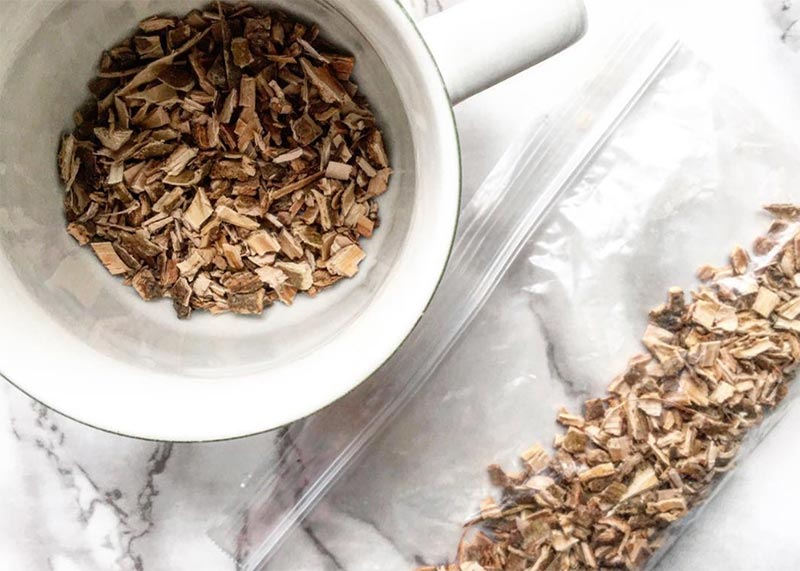
Lastly, willow bark extract acts as an astringent because of the high amount of tannins in it. Tannins are the same compounds that make our mouth feel tight after we’ve drunk a particularly dry red wine. Tannins work by causing tissue to constrict. This can help with toning the skin and tightening the pores as well as with targeting swelling caused by pimples.
Willow Bark Extract Benefits for the Skin
- Willow bark extract’s anti-inflammatory properties help reduce redness in the skin that is caused by all kinds of sensitivity, including rosacea.
- Those same anti-inflammatory properties also counter redness caused by acne, so it helps to quickly minimize the look of pimples.
- The mixture of soothing and astringent properties of willow bark extract helps to minimize the size of pimples by reducing swelling.
- Willow bark extract’s pain-relieving abilities can reduce the pain associated with breakouts as well as with other kinds of irritation.
- This one is anecdotal, but I’ve personally found that willow bark extract is able to reduce itchiness from rashes and mosquito bites.
- Because of the tannins in willow bark extract, it is able to act as an astringent that tightens the skin and reduces the appearance of large pores.
- The antioxidant capacity of willow bark extract skin care helps to prevent free radical damage, which in turn keeps the skin looking youthful for longer.
Salicylic Acid vs. Willow Bark Extract
You can think of willow bark as the all-natural precursor to salicylic acid. While these days most salicylic acid is synthetically derived, it would have never been discovered if it hadn’t been for its presence in willow bark. Despite some similarities between the two ingredients, willow bark is not the all-natural version or replacement of salicylic acid.
Many sources try to completely equate willow bark extract and salicylic acid, by saying that the salicin in the willow bark extract can convert into salicylic acid in the body. While this is true when salicylic acid is consumed, there is no evidence that this can occur when willow bark extract is applied topically.
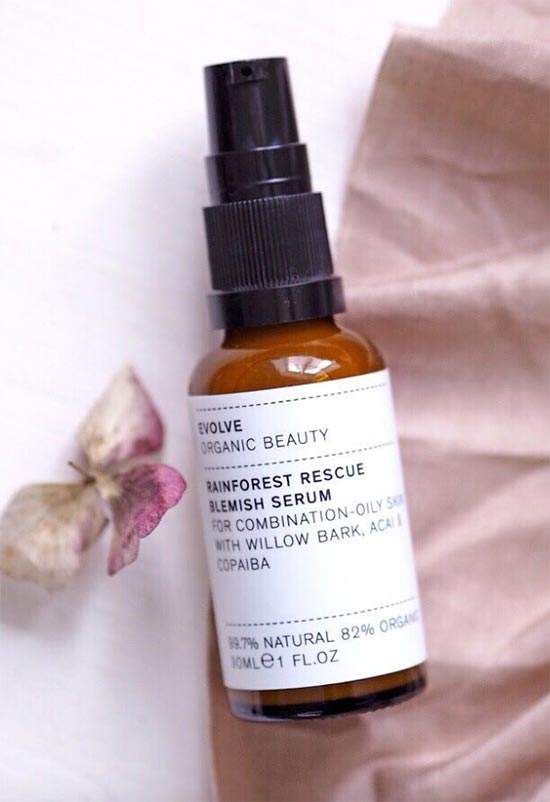
Sometimes it will be implied that willow bark extract can exfoliate the skin the same way salicylic acid does, but unfortunately that is not true either.
Salicylic acid works threefold, by exfoliating the skin, preventing the proliferation of the acne bacteria, and by soothing inflammation. While some sources do imply that willow bark extract can also exfoliate or kill acne bacteria, there is very little evidence to suggest that’s true.
However, we still know that willow bark extract is a phenomenal anti-inflammatory that does a beautiful job of soothing the skin and minimizing redness and swelling.
Possible Side Effects of Willow Bark Extract Skin Products
There are no side effects to applying willow bark extract to your skin topically, as it is a simple, skin-soothing ingredient that doesn’t have any adverse effects. Since it is a natural extract, some people might be allergic to it. This means that, as with any new skincare product, you should first test it on your forearm or inner arm just to ensure that you don’t have an allergy.
Willow bark extract is often also taken orally for pain relief or fever reduction, since people see it as an alternative to aspirin. There are potential side effects similar to those of aspirin when willow bark extract is consumed, so it shouldn’t be taken without the consultation of a medical professional.
How to Choose Willow Bark Extract Skin Products?
Based on your skin type and concern, this is how you choose the right willow bark products for you:
Willow Bark Extract for Acne-Prone Skin
Acne shows up in the skin as either clogged pores, like blackheads or whiteheads, or as pimples, which are clogged pores that had become infected with the acne bacteria. Willow bark extract is a classic choice for acne-prone skin, since it is able to quickly and effectively reduce the appearance of active breakouts, by reducing the inflammation and swelling caused by the acne bacteria, and eliminating the pain.
Any non-comedogenic product with willow bark extract will help with reducing the size of pimples and speeding up their healing, although the best willow bark extract skincare products would be items that stay on the skin, like a toner, serum, spot treatment, or moisturizer.
Willow bark extract works especially well for soothing acne when combined with other anti-inflammatories like witch hazel or allantoin, but it’s also ideal combined with antibacterial tea tree oil or skin-resurfacing salicylic or glycolic acids.
Willow Bark Extract for Sensitive Skin
Those with sensitive skin find that it gets red and irritated easily, and they sometimes might even have sensitive skin conditions like rosacea. Willow bark’s anti-inflammatory capabilities can give relief to the skin when its irritated, as well as potentially help prevent the irritation from occurring in the first place.
Those with sensitive skin should take care to avoid willow bark extract in harsh formulas made for severely oily or acne-prone skin, as those might cause irritation because of high alcohol content or strong acids.
Instead, find formulas that combine willow bark extract with other skin soothers like aloe vera, calendula extract, or glycerin. Gentle cleansers with willow bark extract as well as serums, toners, and some moisturizers could work well for sensitive skin.
Willow Bark Extract for Oily Skin
If your skin produces a lot of oil or if you have larger pores, then you will especially enjoy the astringent effects of willow bark extract. Because of its high tannin content willow bark extract acts as an astringent, meaning that it can tighten the tissue. This helps to minimize the appearance of the pores.
Those with oily skin might also be more prone to breaking out, in which case willow bark’s soothing effect on acne will also be great for you.
Look for willow bark extract in any mattifying formulation, like some of the moisturizers I have on the list above. You can also find it in toners and cleansers, especially in conjunction with witch hazel, another excellent astringent. Masks with kaolin clay and willow bark extract will do a wonderful job of clarifying and mattifying your skin, as well.
Willow Bark Extract for Dry and Normal Skin
Those with dry skin often have smaller pores, and their skin produces little to no oil, while those with normal skin have regular oil production and small to medium-sized pores. If that sounds like you, then you really don’t need to shy away from willow bark extract, but it won’t have any unique benefits for your skin.
You could still make use of its skin-soothing and antioxidant properties of willow bark, especially if in addition to dryness you also have sensitivity or if you are concerned about premature aging.
Look for products with willow bark extract as well as other skin-hydrating or moisturizing formulas – especially with glycerin or hyaluronic acid. Toners and cleansers that are free of alcohol or sulfates could totally work for your skin, as well!

Willow Bark Extract for Mature Skin
Those who are starting to experience the development of fine lines, wrinkles, and hyperpigmentation, or any other signs of skin aging, can certainly turn to willow bark extract for a touch of protection. Willow bark extract contains many different kinds of antioxidants that help prevent the free radical damage that leads to premature aging.
It’s not difficult to find antioxidants in skin care, so if your only concern is slowing down the look of aging in the skin, then perhaps you should first turn to more popular anti-aging ingredients like retinol, vitamin C, or hyaluronic acid.
However, if you have a mixture of concerns like adult acne or sensitivity combined with early signs of aging, then willow bark extract might be the exact ingredient that your skin needs.
Look for formulas with willow bark extract that also contain a lot of humectants like glycerin and hyaluronic acid, as those plump up the skin and make it appear more youthful. Also look for other antioxidants in the formula, like vitamin C or green tea, or skin resurfacers, which will speed up cell turnover like glycolic acid.
How to Use Willow Bark Extract in Skin Care
Willow bark extract shows up in all kinds of skincare products, including cleansers, toners, moisturizers, spot treatments, and masks. Since willow bark extract is a perfectly gentle ingredient, you could even have it in every single one of your skincare products, although at that point it might also be overkill.
I’m sure you’ll choose one of the best willow bark extract skincare products I’ve listed earlier, in which case, simply follow the instructions on the package and use it appropriately.
Willow bark extract is safe to use daily, and even multiple times a day.
Photos via @travelling_skin_guru, Instagram

